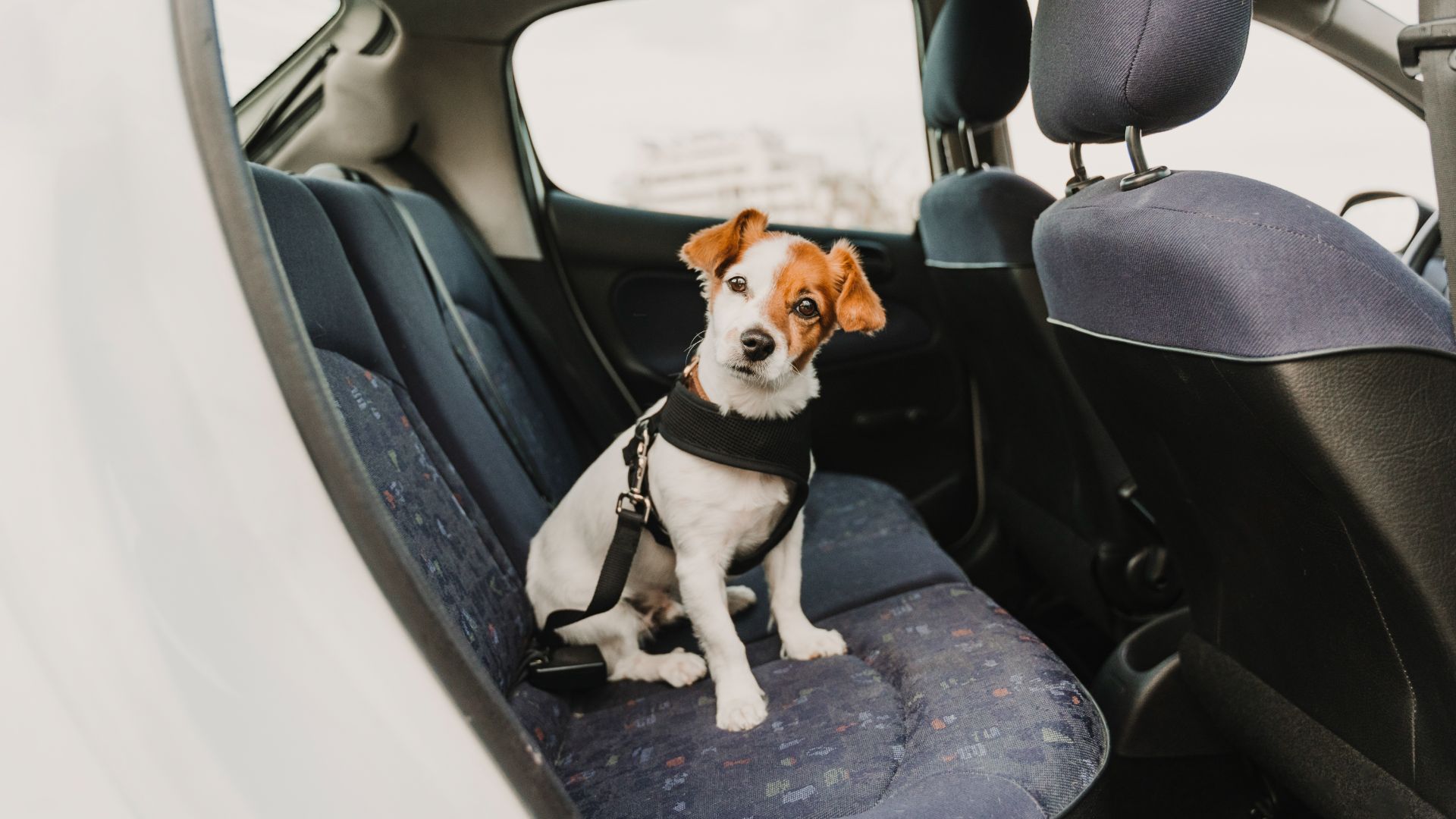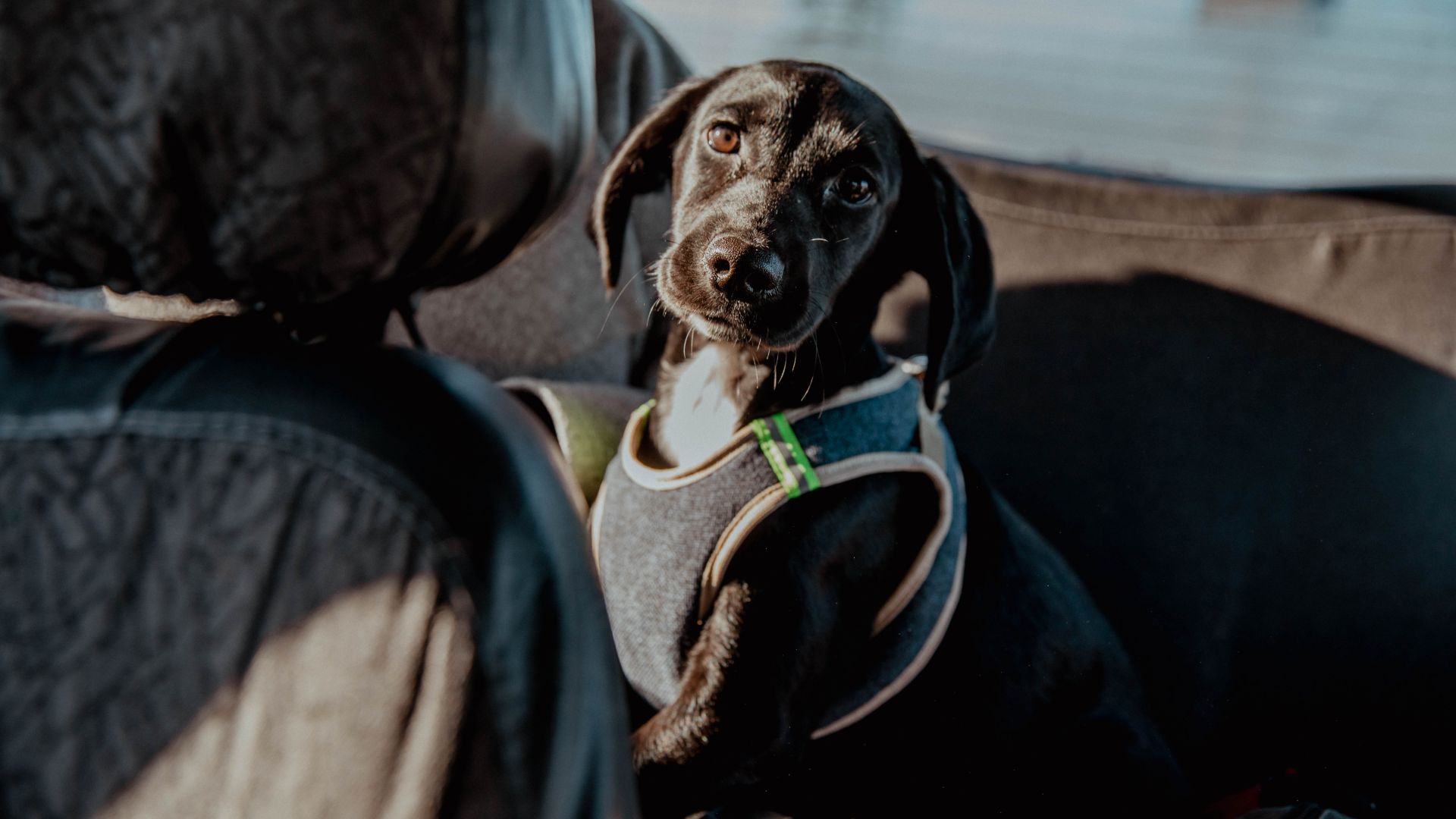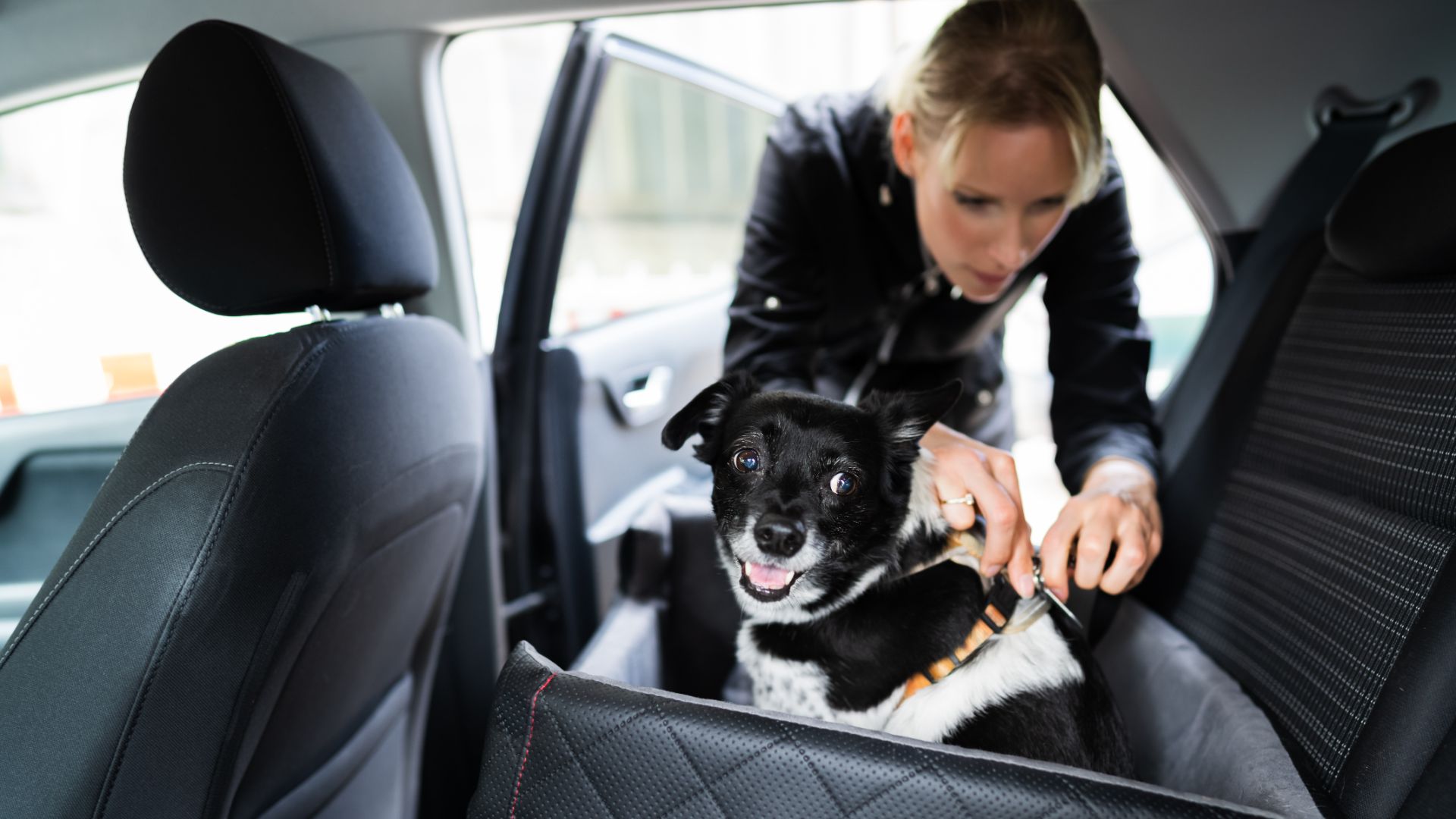
Is there anything more fun than a road trip with your pet? Not really, unless your dog suffers from travel sickness or is car shy. That aside, though, taking a happy pet on a comfortable car ride to somewhere exciting has got to be one of our favorite activities as dog owners.
Before you go, it’s important to be hot on dog car safety so you can ensure you have everything you need and know how to support your pup in transit. Whether you’re going for a day trip or a dog-friendly vacation, read our top dog car safety tips to ensure your pooch gets a smooth ride.
Car safety tips for driving with your dog

1. Take regular breaks
Just like we humans need regular breaks to stretch our legs and go to the bathroom, so too do our canine companions. If you’re going on a long road trip with your dog, make sure you stop every couple of hours that you can both get some air and move about.
2. Offer your dog a calm, secure environment
A dog who is calm and content in the car is a dog who won’t offer the driver any distractions. Plus, there’s minimal chance they’ll wriggle out of their dog harness or try to bypass a back seat barrier to join you from the trunk.
According to companion animal vet Dr Rebecca MacMillan, stocking the car with comforting items can help.
“You can provide your pet with familiar items to help keep them settled, like favorite items of bedding and toys,” she says.
“Puzzle feeders could be considered to keep pets busy in the car, but care may be needed in dogs that are prone to travel sickness,” she adds. “Calming appeasing pheromones can be helpful for some anxious dogs. These can be spritzed onto your dog’s bedding or provided in an impregnated collar.”
3. Combat dog travel sickness head-on
Dr MacMillan recommends speaking to your vet if your dog suffers from travel sickness.
“Medication is available to help with this, which can make journeys much more pleasant for you and your dog,” she continues. “Your dog is likely to be much more settled and relaxed if they are not feeling nauseuous.”
If your dog is young, there could be light at the end of the tunnel.
“The good news is that many young dogs will grow out of travel sickness as they mature.”
4. Don’t let your dog hang out the window

Letting your dog hang out the window is incredibly dangerous as it increases the likelihood they will sustain an injury.
Above all, your dog must be appropriately secured in your vehicle. It’s the number one dog car safety concern, and you should be confident you know how to secure a dog in a car.
“To ensure your dog stays safe in a traveling car, appropriate restraint should be your top priority,” affirms Dr MacMillan. “This means keeping your pet in a dog crate, behind a dog guard or clipped into a dog car harness. This keeps them and you safe if your vehicle is involved in an accident.”
5. Take short trips to begin with
It’s a good idea to get your dog used to traveling in the car by taking short trips before you attempt longer ones.
“Some dogs can find travel stressful so try and work on positive association training,” says Dr MacMillan. “This means sitting in a stationary car for short periods with dog treats and praise, followed by small journeys to nice walks, and then gradually increasing the length of your travel time.”
6. Pack a dog-friendly travel kit
Make sure you have all the essentials on hand to help make your dog’s journey as smooth and comfortable as possible. Water, a pet bowl, food and treats for when you stop, dog toys, and a blanket and pillow can all help your dog feel safe and secure.
7. Never leave your dog alone in the car
Finally, never leave your dog alone in the car, whether restrained or unrestrained.
“When the vehicle is stationary, it is key that you don’t leave your dog unsupervised during warm weather,” says Dr MacMillan. “In even moderate temperatures, the inside of a car can heat up very quickly.
“Dogs have limited ways to lose their body heat, so they can rapidly succumb to heatstroke, even when the window is left open a crack. Brachycephalic breeds, or flat-faced breeds, and large dogs with heavy coats will be the most at risk.”







